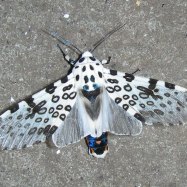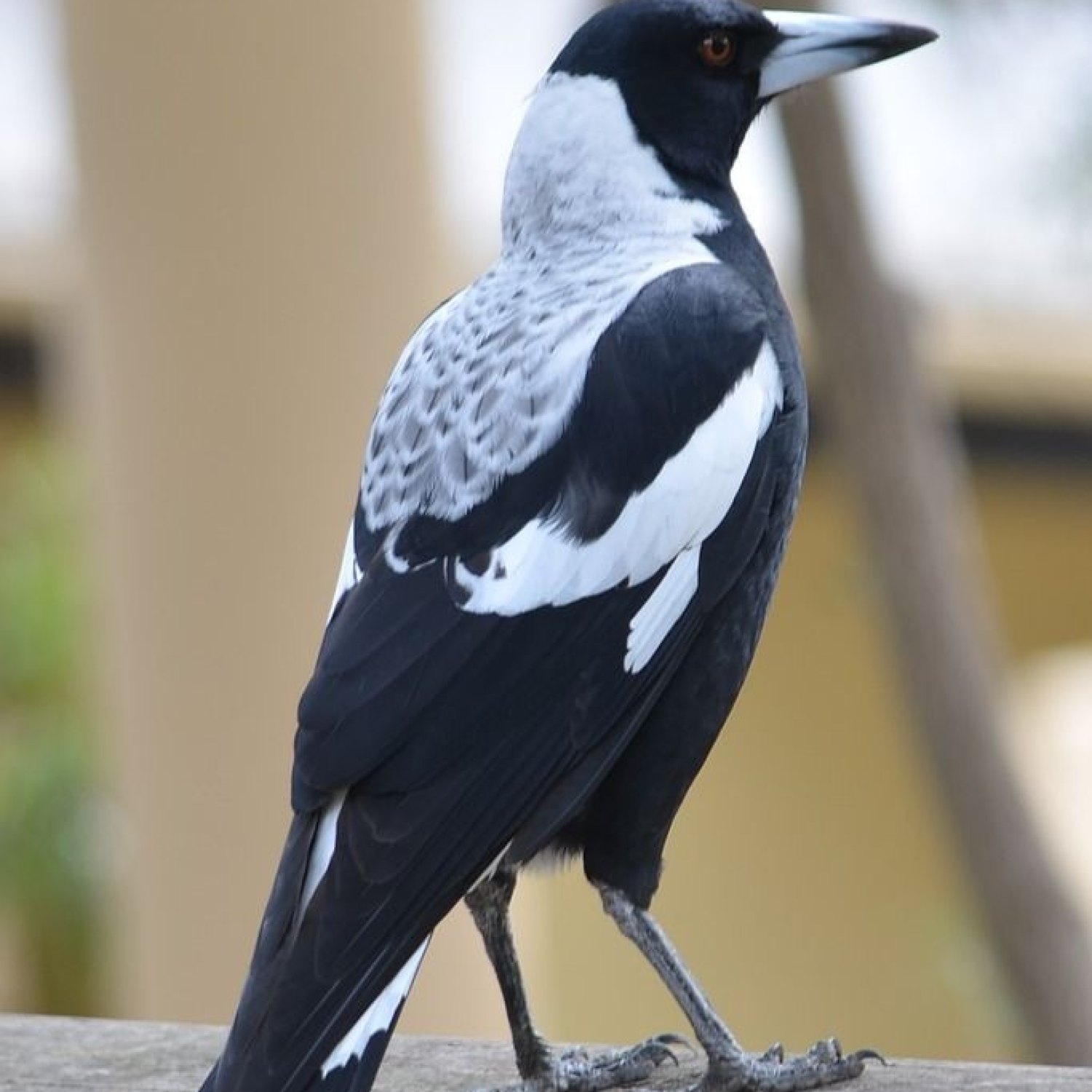
Magpie
45-60 cm
The Magpie is a medium-sized bird with a long tail, found in Europe, Asia, and Africa. Belonging to the Corvidae family, these intelligent birds are known for their black and white plumage and distinct calls. They are also notorious for their habit of collecting shiny objects, making them a familiar sight in urban and suburban areas. Keep an eye out for these curious feathered creatures on your next nature walk! #Magpie #Corvidae #Birds #Nature
Animal Details Summary:
Common Name: Magpie
Kingdom: Animalia
Habitat: Woodlands, parks, gardens
The Clever Magpie: A Master of Adaptability and Intelligence
Magpies are fascinating creatures that have captured the curiosity and interest of humans for centuries. These striking birds, with their contrasting black and white plumage, have captured our hearts and minds with their intelligence, adaptability, and intriguing behaviors.The magpie belongs to the kingdom Animalia, the most diverse and complex group of organisms on our planet. They are members of the phylum Chordata, which includes all animals with a spinal cord Magpie. As part of the class Aves, magpies are classified as birds and belong to the order Passeriformes, commonly known as perching birds. Magpies also belong to the family Corvidae, a group that includes crows, ravens, and jays. With such a diverse and prestigious classification, it's no surprise that the magpie is quite a remarkable and intelligent creature.
Magpies are native to the Eurasian continent, and their geographical distribution spans Europe, Asia, and Africa. They are found in a variety of habitats, including woodlands, parks, and gardens. Magpies are highly adaptable birds and have been able to thrive in both urban and rural environments. They are also known to adapt quickly to changes in their surroundings, making them resilient and able to survive in different conditions.
The Omnivorous Diet of Magpies
Magpies are omnivores, meaning they eat both plants and animals. Their diet consists of insects, small mammals, birds, eggs, and fruits, as well as grains and seeds Mountain Cur. They are also known to scavenge on carrion, making them valuable to the ecosystem as they help clean up decaying matter. In urban areas, magpies have adapted to human settlements and can often be found scavenging on human food scraps, making them quite a familiar sight in cities and towns.Magpies are also intelligent foragers, using their beaks and sharp eyesight to find food. They have been observed using tools, such as sticks, to retrieve food from hard-to-reach places. This ability to use tools is quite remarkable and showcases their high level of intelligence and problem-solving skills.
The Fascinating Behavior of Magpies
Aside from their intelligence, magpies are known for their intriguing behaviors and social dynamics. They are highly social animals and live in groups, called a "magpie parliament." These groups consist of a dominant male and female pair, along with their offspring from previous breeding seasons. The young magpies help their parents take care of their younger siblings, providing valuable skills that prepare them for their own future breeding seasons.One of the most fascinating behaviors of magpies is their inclination towards shiny objects. They are known for their habit of collecting and hoarding shiny items, such as coins, keys, and jewelry. This behavior is believed to be a form of play and a way for magpies to exhibit their intelligence by seeking out items that are visually appealing to them.
Magpies are also known for their complex vocalizations and communication. They are highly vocal birds and can produce a wide variety of calls and songs. Some species of magpies are even mimics and can imitate the sounds of other birds and animals, showcasing not only their vocal abilities but also their adaptability and intelligence.
The Adaptability and Resilience of Magpies
Magpies have been able to thrive and adapt to changing environments due to their resilience and intelligence. They are adaptable and can adjust to different food sources and conditions, making them highly versatile creatures. They have also been able to successfully expand their geographical range, with some subspecies of magpies now found in countries outside of their native habitat, such as Australia.Furthermore, magpies have been able to survive and even thrive alongside humans in urban environments. Despite the loss of their natural habitat, they have been able to adapt, thanks to their intelligence and ability to find new sources of food and shelter. This adaptability makes them a valuable species, not just in their natural habitat but also in urban areas where they can help control insect populations and keep our environment clean.
The Striking Beauty of Magpies
Aside from their intelligence and adaptability, magpies are also known for their striking appearance. These medium-sized birds have a distinctive black and white plumage. Their long tails and sleek bodies make them stand out in any landscape. They are also known for their intelligence with each of their feathers being able to absorb and disperse light, giving them an iridescent sheen in the sunlight.Magpies are also renowned for their elaborate courtship rituals where the males present gifts, such as food or shiny objects, to the females. This showcases their intelligence, creativity, and strong social bonds within their parliament groups.
In Conclusion
Magpies are extraordinary creatures that have captivated humans for centuries. Their intelligence, adaptability, and striking beauty make them a beloved and iconic species. As they continue to coexist alongside humans, it is important to recognize and appreciate the valuable role they play in our ecosystem and the fascinating behaviors and adaptability that make them true masters of their environment.Next time you see a magpie flying overhead or hear its distinctive call, take a moment to appreciate the incredible bird that it is and the fascinating characteristics that make it stand out among the animal kingdom.

Magpie
Animal Details Magpie - Scientific Name: Pica pica
- Category: Animals M
- Scientific Name: Pica pica
- Common Name: Magpie
- Kingdom: Animalia
- Phylum: Chordata
- Class: Aves
- Order: Passeriformes
- Family: Corvidae
- Habitat: Woodlands, parks, gardens
- Feeding Method: Omnivorous
- Geographical Distribution: Eurasia
- Country of Origin: Various countries in Eurasia
- Location: Europe, Asia, Africa
- Animal Coloration: Black and white
- Body Shape: Medium-sized with long tail
- Length: 45-60 cm
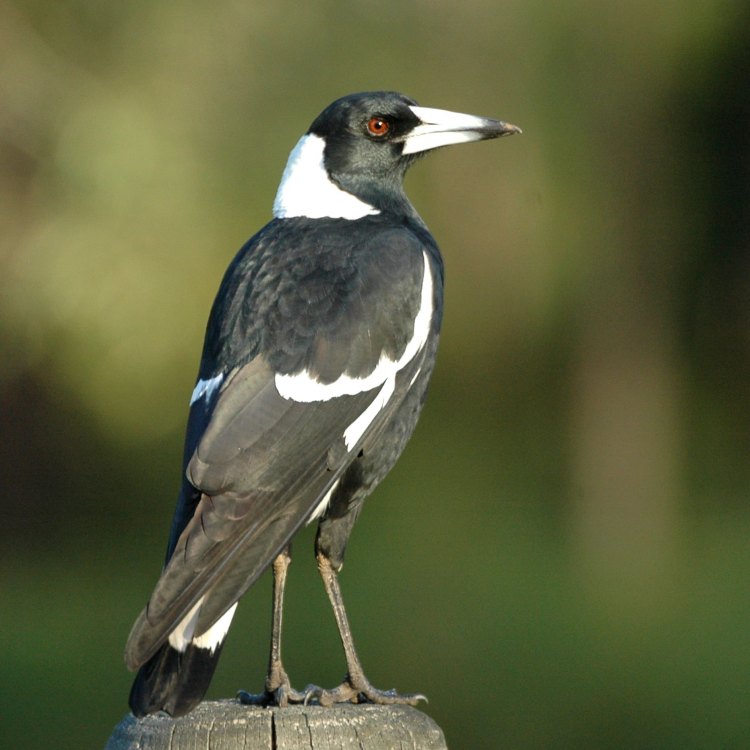
Magpie
- Adult Size: Medium-sized
- Average Lifespan: 3-5 years
- Reproduction: Eggs
- Reproductive Behavior: Monogamous
- Sound or Call: Variety of harsh calls and mimicry
- Migration Pattern: Partially migratory
- Social Groups: Family groups
- Behavior: Highly intelligent and adaptable
- Threats: Habitat loss, predation, hunting
- Conservation Status: Least Concern
- Impact on Ecosystem: Seed dispersal, scavenging
- Human Use: None
- Distinctive Features: Long tail, black and white plumage
- Interesting Facts: Known for their intelligence and ability to mimic sounds
- Predator: Various birds of prey, cats, foxes
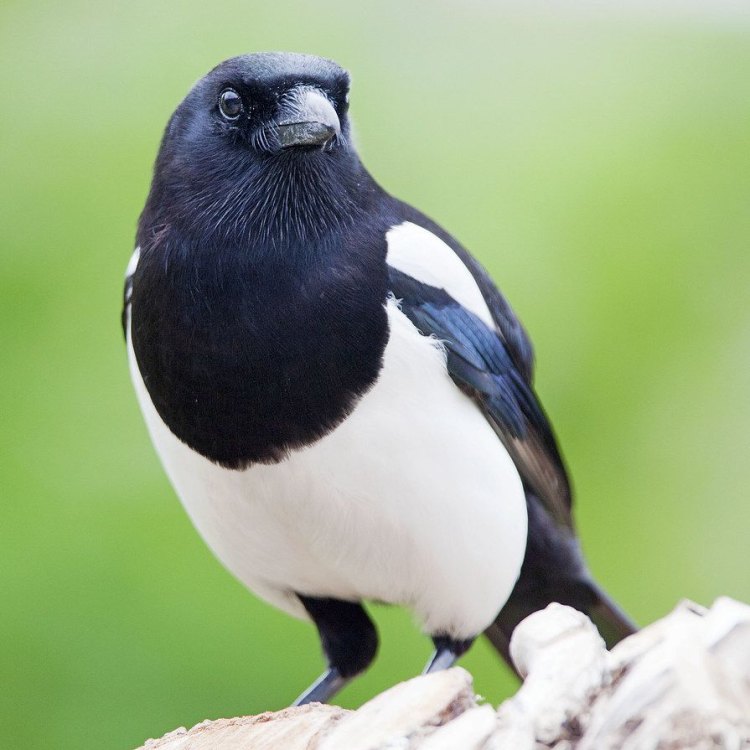
Pica pica
The Fascinating and Adaptable Magpie: A Bird Like No Other
The magpie, known scientifically as Pica pica, is a medium-sized bird that belongs to the corvid family, along with ravens and crows. They are popular among bird enthusiasts for their striking beauty and impressive intelligence, making them one of the most fascinating birds in the world. With their monochromatic plumage and distinct vocalizations, magpies have a unique and charming quality that sets them apart from other bird species. In this article, we will delve into the intriguing world of magpies and explore their distinctive features, behaviors, and impact on the ecosystem PeaceOfAnimals.Com.The Basics of Magpies
The magpie is a relatively small bird, measuring around 45-50 centimeters in length and weighing approximately 200-250 grams. They are found throughout Europe, Asia, and parts of North Africa, with different subspecies found in different regions. In terms of appearance, magpies have a black and white plumage, with a long, distinctively shaped tail. They also have a strong, pointed black beak, ideal for cracking open nuts and seeds.
A Short Life, But Full of Adventure
The average lifespan of a magpie is 3-5 years, with captive magpies living up to 20 years. Despite their short lifespan, magpies live life to the fullest. They are highly intelligent and adaptable birds, constantly exploring and finding ways to thrive in their environment.
A Monogamous Species
Unlike other bird species, magpies are monogamous and form long-lasting pair bonds. Once they find a mate, they remain together for life, sharing the responsibilities of building nests, raising young, and defending their territory together Mastiff Mix.
The Call of the Magpie
Magpies are well-known for their extensive range of vocalizations, which include a variety of harsh calls, whistles, and mimicry. They can even imitate human speech, making them popular among bird owners. These vocalizations play a crucial role in their social interactions and territory defense.
Partially Migratory Birds
While some magpie populations are known to be fully migratory, others are partially migratory, meaning they only migrate when necessary. During extreme winters, they may migrate in search of food, but for the most part, they are sedentary birds.
Family Groups
Magpies are social birds, and they are often found in family groups. These groups consist of the breeding pair and their offspring, with the young staying with their parents for up to a year before leaving to establish their own territory.
Highly Intelligent and Adaptable Creatures
One of the most remarkable characteristics of magpies is their intelligence. They possess a keen intellect and are capable of problem-solving and complex social interactions. They also have excellent memory, as they are known to remember the locations of food sources and even recognize familiar human faces. Their adaptability is another impressive trait, as they can quickly adjust to changing environments and find innovative ways to survive.
Threats to Magpies
Like many other animal species, magpies face threats from human activities. The destruction of their natural habitat due to urbanization and deforestation is a significant threat to their population. They are also hunted for their beautiful plumage and considered pests in some areas due to their scavenging behavior. Predation by various birds of prey, cats, and foxes is also a potential threat to magpies.
Conservation Status of Magpies
Thankfully, despite these threats, magpies are currently categorized as "Least Concern" on the IUCN Red List, indicating a healthy population worldwide. However, conservation efforts are still crucial to ensure the long-term survival of these magnificent creatures.
The Impact of Magpies on the Ecosystem
Magpies play a vital role in the ecosystem, particularly in seed dispersal. As they forage for food, they often pick up and transport seeds, facilitating the growth of new plants and trees in different areas. They also act as scavengers, cleaning up carrion and aiding in the decomposition process, which helps maintain a healthy balance in the ecosystem.
Humans and Magpies: A Unique Relationship
Unlike other animals, magpies do not have a significant impact on human life. They do not serve as a food source or provide any specific benefits to humans. However, their intelligence and ability to mimic sounds have made them popular among bird lovers, and some magpies even become beloved pets.
Unique Features of Magpies
Magpies have several distinctive features that make them stand out among other bird species. Their long, black and white tail is one of their most recognizable features. They also have a loud, melodic call and a keen eye, allowing them to spot food from a considerable distance.
Fascinating Facts about Magpies
There is no shortage of fascinating facts about magpies, and perhaps their most well-known attribute is their intelligence. They are generally curious birds, and their problem-solving skills have been observed and studied by scientists. Magpies are also social birds, and they have complex social hierarchies within their family groups. It is worthwhile to mention that magpies have been the subject of many myths and legends throughout history, with some cultures considering them as symbols of good luck and prosperity.
Natural Predators of Magpies
Magpies may possess impressive intelligence, but they are still vulnerable to natural predators. Birds of prey such as eagles, hawks, and falcons are a significant threat to magpies, as they feed on their eggs and young. Other predators include domestic cats and foxes, who can attack magpies and their nests.
In Conclusion
In conclusion, magpies are fascinating creatures that captivate us with their beauty, intelligence, and adaptability. Despite facing threats from humans and natural predators, magpies are resilient and have managed to thrive in various environments. As we continue to study and learn more about these incredible birds, it is essential to appreciate and protect them to ensure their continued survival in the wild. So, the next time you spot a magpie, take a moment to admire their unique features and contributions to the ecosystem.
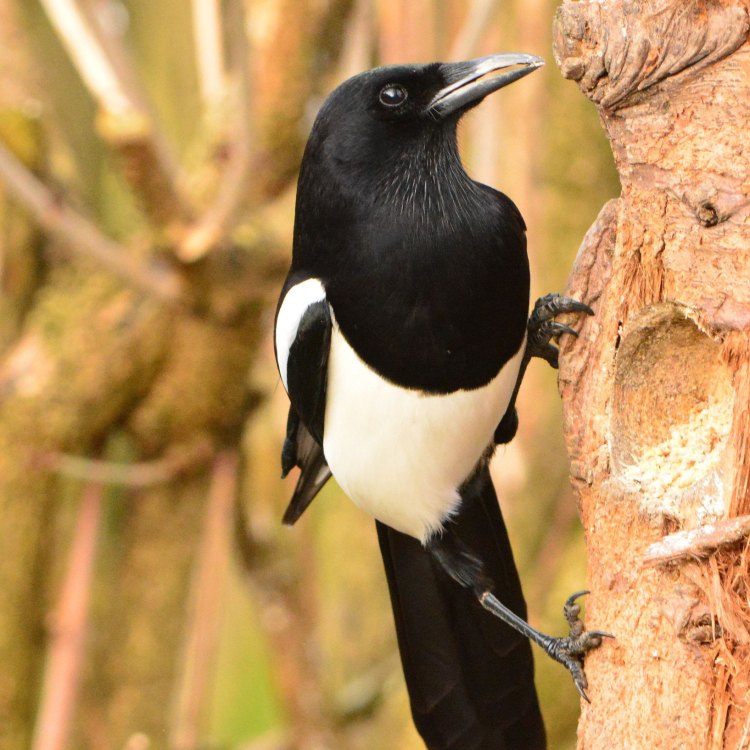
The Clever Magpie: A Master of Adaptability and Intelligence
Disclaimer: The content provided is for informational purposes only. We cannot guarantee the accuracy of the information on this page 100%. All information provided here may change without prior notice.


